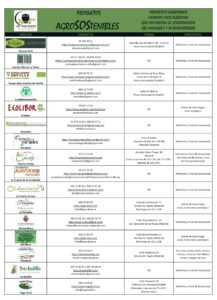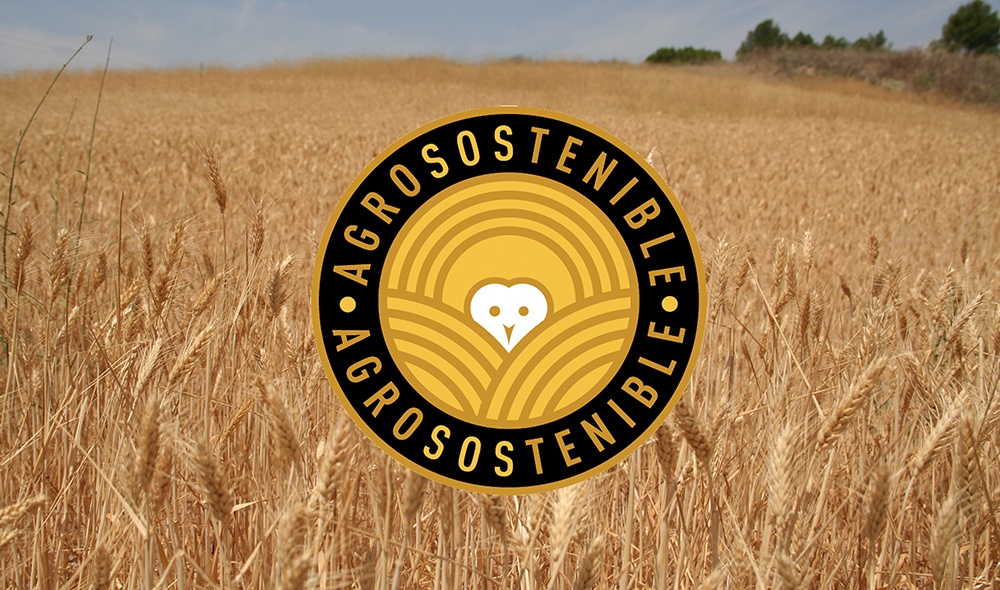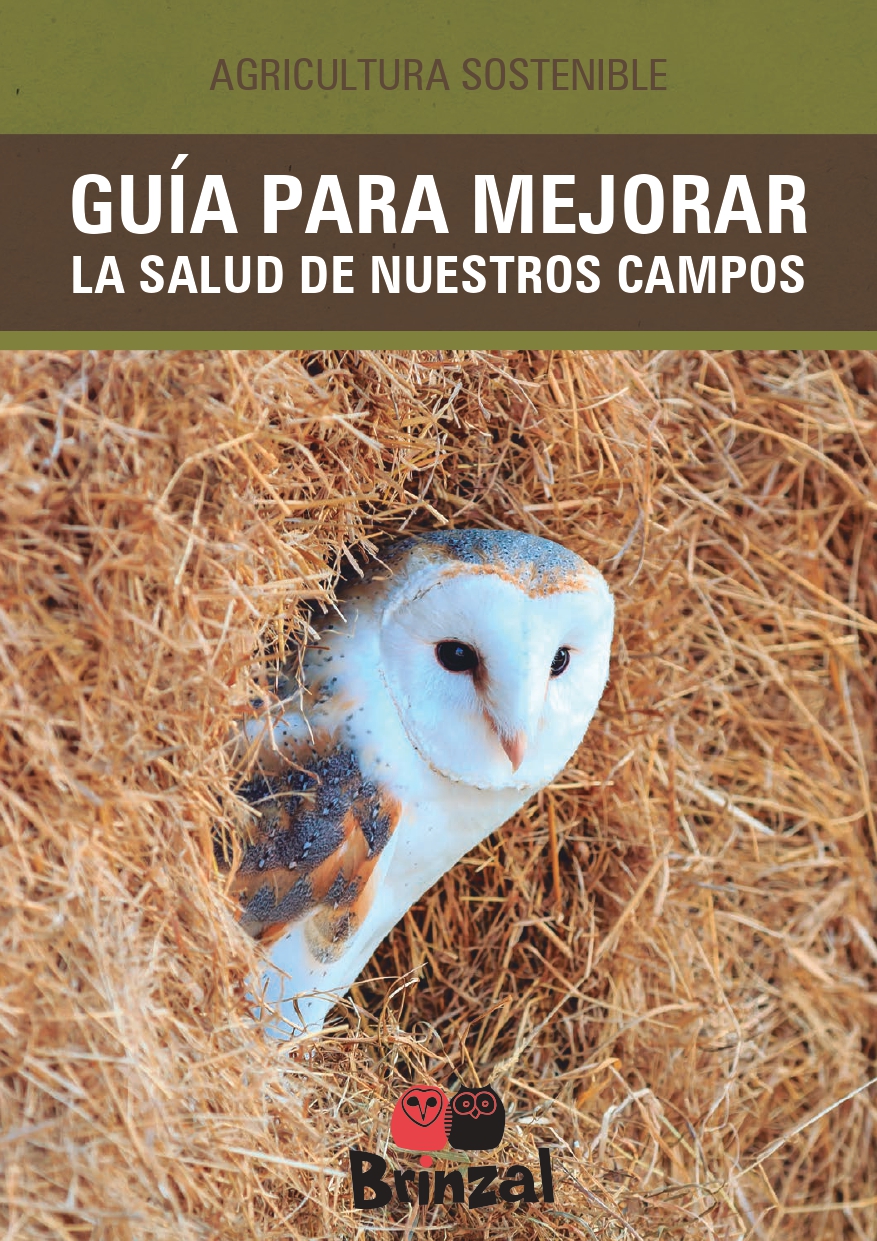En 2012 arrancaba “Un Mochuelo en cada Olivo”, un proyecto llevado a cabo por BRINZAL con el apoyo de la Fundación Biodiversidad, del Ministerio de Agricultura, Alimentación y Medio Ambiente durante los dos primeros años, y de la Consejería de Medio Ambiente y Ordenación del Territorio de la Comunidad de Madrid en 2014.
El objetivo era demostrar los beneficios que, tanto para el agricultor como para el mochuelo, podía obtenerse de la práctica de una agricultura sostenible. Los excelentes resultados obtenidos a lo largo del proyecto nos animaron, e incluso “obligaron”, a dar continuidad a esta apuesta por la conservación de la biodiversidad basada en la cooperación con los propietarios y gestores de explotaciones agrícolas.
En 2014 iniciamos, AgroSOStenible, con el apoyo de la Fundación Biodiversidad, del Ministerio de Agricultura, Alimentación y Medio Ambiente, cuyo objetivo es reproducir sistemas de explotación agraria que favorezcan a las especies de aves dependientes de estos hábitats. Este año, sumamos además el apoyo de la European Outdoor Conservation Association (EOCA).
INTENSIFICACIÓN DE LA AGRICULTURA E IMPACTO SOBRE LAS AVES
Los sistemas tradicionales de cultivo han adquirido un alto valor ecológico en muchas regiones del mundo, debido al gran número de especies animales dependientes de las tierras dedicadas a la producción de alimentos.Sin embargo, durante la segunda mitad del siglo XX, los cambios socioeconómicos y el desarrollo tecnológico de la agricultura han provocado muchos y rápidos cambios en los sistemas tradicionales de producción, generando una grave amenaza para las especies que dependen de éstos.
Se ha impuesto el monocultivo y el aumento del tamaño medio de las parcelas, la utilización generalizada de fertilizantes químicos, herbicidas y pesticidas, el roturado excesivo de la tierra y la desaparición de linderos y barbechos. Este conjunto de cambios, lo que conocemos como intensificación agrícola, dirigidos a incrementar la producción, ha provocado una grave pérdida de calidad de hábitat.
Como consecuencia de esta intensificación, muchas especies de aves han visto reducidos o alterados drásticamente los hábitats que necesitaban para alimentarse y reproducirse, sufriendo importantes disminuciones en sus poblaciones y áreas de distribución.
En la actualidad, el 80% de las especies que dependen de estos hábitats en Europa presentan un estado de conservación desfavorable. En Europa, la mayor parte de los instrumentos disponibles para la conservación de las aves de estos ambientes agrícolas se basan en la catalogación de estos espacios dentro de la Red NATURA 2000, con figuras de protección como las ZEPAs (zonas de especial protección para las aves) o los LICs (lugares de interés comunitario).
EL PROYECTO
La principal actuación del proyecto es el asesoramiento a los agricultores acerca de cómo favorecen o perjudican los sistemas de producción a las aves del medio agrario, así como la realización de actuaciones de mejora en las explotaciones agrícolas para favorecer a estas especies, como la colocación de cajas nido, la instalación de estacas de madera o la plantación de árboles.Apostamos por la puesta en marcha de medidas que no sólo favorecen la conservación de las especies ligadas a estos ecosistemas, sino también a los agricultores, mejorando la calidad de la producción y reduciendo los costes. También orientamos en materia de agricultura y producción ecológica, así como del proceso de conversión. Además, como novedad añadida, este año vamos a etiquetar productos procedentes de estas producciones que apuestan por la producción sostenible.
Geográficamente, AgroSOStenible se desarrolla Madrid y Castilla-La Mancha, concretamente en el LIC Vegas, Cuestas y Páramos del Sureste de Madrid, la ZEPA Cortados y Cantiles de los Ríos Jarama y Manzanares, el LIC Yesares del Valle del Tajo y la ZEPA Estepas Cerealistas de la Campiña.
Otro de los objetivos del proyecto es colaborar con las administraciones locales pertenecientes a estas áreas protegidas para la realización de actividades que potencien el turismo ornitológico en la zona, como senderos y rutas.
El proyecto busca crear unas infraestructuras que vinculen la conservación y la sostenibilidad, con beneficios económicos para los habitantes de esas zonas. Por último, colaboraremos con estas administraciones locales, así como con otras entidades, en actuaciones de concienciación y difusión acerca de la problemática que afecta a estas aves dependientes de hábitats agrarios.

MEDIDAS QUE BENEFICIAN A AGRICULTORES Y AVES
Las medidas que proponemos son de fácil aplicación y no incrementan los costes de producción, como la rotación de cultivos, el mantenimiento de la estructura vegetal, el empleo de abonos naturales, el mantenimiento de linderos y manchas de vegetación natural, o el retraso en la recolección del cereal.
De la puesta en práctica de estas medidas no sólo se benefician innumerables especies animales y vegetales silvestres, sino también los agricultores:
– En las parcelas tradicionales se encuentran un 30% más de especies y 50% más de individuos que las intensivas.
– Las parcelas tradicionales controlan mejor las plagas y enfermedades de manera natural.
– Las lombrices de tierra son más abundantes en los suelos protegidos. Estos pequeños animalillos ayudan a mantener la estructura del suelo y la materia orgánica, mejoran la aireación, el drenaje y el crecimiento de las raíces de los cultivos. Son capaces de mover hasta 30 toneladas de tierra por hectárea y año.
– Las parcelas que no usan pesticidas o fertilizantes químicos no contaminan el agua y pierden menos de nitratos.
– En situaciones climáticas extremas se obtienen mejores cosechas en cultivos tradicionales que en intensivos. Además, los suelos manejados de manera ecológica tienen más materia orgánica y absorben más agua durante fuertes precipitaciones, reducen los corrimientos y la erosión y acumulan más agua en épocas de sequía.
– Los alimentos procedentes de cultivos ecológicos no contienen nitratos o residuos de pesticidas, muy tóxicos para la salud, tienen más vitaminas y antioxidantes, están más equilibrados en proteínas y minerales y presentan un mayor contenido en materia seca.
– La eliminación de actividades como el empleo de herbicidas, pesticidas y fertilizantes o la roturación excesiva reduce los costes económicos para el agricultor.
Si estás interesado en participar en este proyecto o quieres más información, puedes contactar con nosotros.
Con el apoyo de:
![]() .
. ![]()



